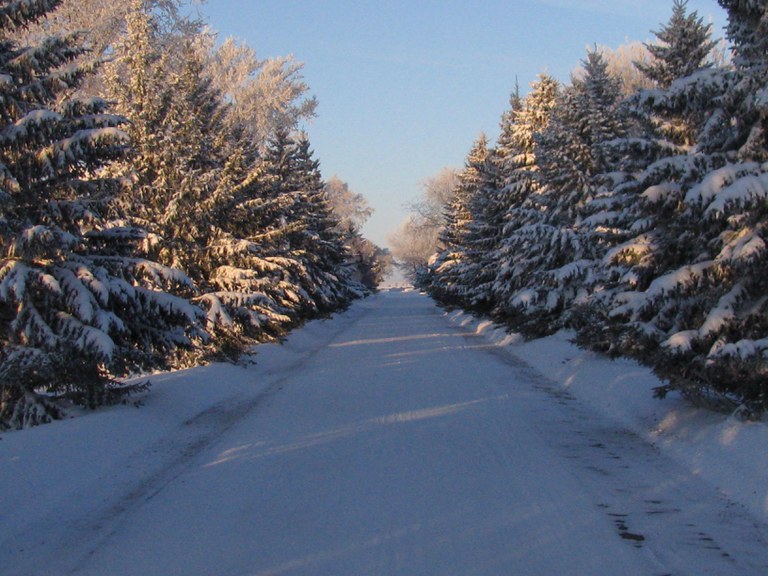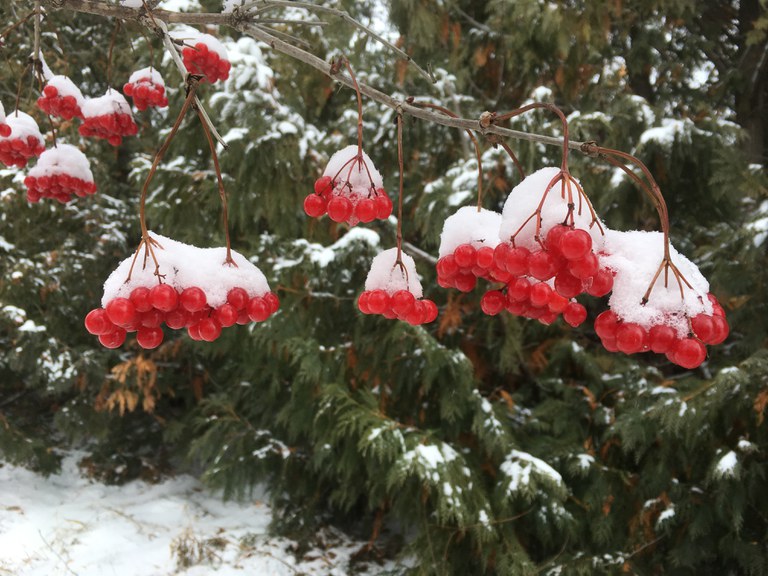Benefits of Winter Trees
When we think of the benefits we enjoy from trees, it is likely we think of things derived during the growing season: green landscapes, shade, cleaner air, sequestration of carbon dioxide, and production of oxygen. But benefits of trees continue into the winter months, especially in places like North Dakota.
The use of trees for wind protection to reduce soil erosion has resulted in the planting of 55,000 miles of windbreaks, or shelterbelts, in North Dakota since the 1930’s. Strategic planting of trees and shrubs to form “living snow fences” can also effectively slow down, catch and channel snow in fields and off roads.
Trees cut down on dust and dirt particles entering a building and lower the loss of heat in buildings by reducing cold air infiltration. How much home heating energy can be saved? Even in urban areas, widely spaced trees break the force of chilling winds enough to save between 3 and 4 percent on heating bills. This translates to a national savings of $1.6 billion per year in single-family homes alone. Urban trees have a big impact on home energy use, no matter the season. And this includes not only the trees surrounding your home. Trees that are 2, 3 or even 6 blocks away from your home are impacting your home’s energy consumption. Even though trees are defoliated in the winter, they disrupt the air as the wind blows toward your house, which slows the wind down before it comes into contact with your walls. Twenty-five percent of home heat loss is due to wind and the related mechanically induced pressures, so reducing the wind that hits your home improves energy savings.

These trees at the CREC provide both beauty and protection during the winter.
Where should trees be placed for maximum energy savings? In urban plantings, don’t worry so much about placement to maximize your benefits – south to you is north to your neighbor. Conifers provide the best wind protection, but avoid planting evergreens where they block winter sun from warming the house. Observe summer shadows on your property to plan tree locations that will maximize energy saving benefits. Trees are year-round ecosystem services providers, and the more trees, the better.
Besides the practical benefits of trees, there is great beauty contributed by woody plants in the winter landscape. Trees and shrubs provide great cold-weather habitat for watchable wildlife. Colorful bark is characteristic of red-osier dogwood and cherry; exfoliating bark curls off the stems of river birch, Pekin lilac and Amur chokecherry. Persistent fruit hangs off the branches of ‘Red Splendor’ and ‘Prairifire’ crabapple, cranberrybush viburnum and mountain ash, providing food for winter birds. Red seed capsules of euonymus winterberry lend a real holiday view against a snowy background.

These berries provide food for winter birds at the CREC.
Whatever the latest forecast from NOAA (the National Oceanic and Atmospheric Administration) predicts for North Dakota, trees will help soften the blow.
Resources:
- Tree City USA Bulletin No. 21, “How Trees Can Save Energy”, www.arborday.org
- “Cold Climate Benefits from Trees”, www.deeproot.com
Gerri Makay
Gerri.Makay@ndsu.edu
ND Forest Service Community Forestry Program Manager


